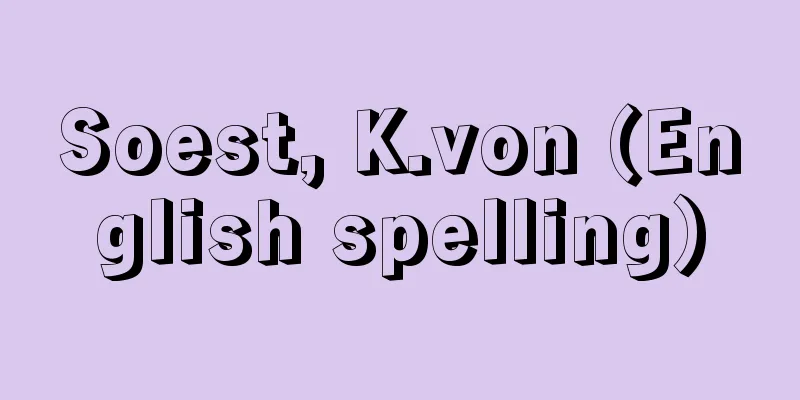Yumeji Takehisa

|
Painter and poet. Born on September 16, 1884 to a sake shop owner in Honjo Village, Oku District, Okayama Prefecture (now Oku Town, Setouchi City). His real name was Mojiro. He dropped out of Kobe Middle School in his first year, and his family moved to Kyushu Yahata (now Kitakyushu City), but Yumeji ran away from home and moved to Tokyo to enter Waseda Jitsugyo School. In 1905 (Meiji 38), he graduated from the third year of the school's main course and went on to the specialized course, where he became friends with Arahata Kanson and others, and attended the Hakuba-kai Western Painting Research Institute. In the same year, he submitted a frame illustration to Junior High School World, and a design he submitted to Postcard Literature won an award, and he dropped out of school. He was also active in the Monday Literary World column of the Tokyo Nichi Nichi Shimbun, edited by Shimamura Hogetsu, and in Waseda Bungaku, among other publications. In 1907, he contributed satirical illustrations and senryu (Japanese poetry) to the daily newspaper "Heimin Shimbun," and created the so-called Yumeji-style beauties, using his newly married wife Tamaki as a model. After "Yumeji Art Collection: Spring Volume" in 1909, he published a succession of Yumeji art collections and poetry collections, captivating the youth of the world. Furthermore, the short poem "Yoimachigusa" included in "Dontaku" was later published as one of the many Senoo music scores that Yumeji designed, and became popular throughout the country. In 1914 (Taisho 3), he opened Minatoya in Nihonbashi, and showed his unique Art Nouveau style in the everyday items designed by Yumeji. In 1916, he moved to Kyoto, and from the following year, 1917, he lived with Kasai Hikono. In the spring of 1918, he held his second solo exhibition at the Kyoto Prefectural Library, and showed his talent as a poet-painter with a taste for the South Barbarians and exotic countries, and nostalgia, in Japanese paintings, oil paintings, and pastels. After returning to Tokyo, he published a collection of love poems for his beloved Hikono, "Yama e yosuru," and then began his period with Oha. In 1931 (Showa 6), he traveled from America to Europe, but in 1933 he fell ill and returned to Japan, failing to realize his dream of building the Harunayama Industrial Art School. He died of pulmonary tuberculosis on September 1, 1934, at the Fujimi Kogen Sanatorium in Shinshu. His representative works include "Kurofuneya," "Twelve Views of Nagasaki," "The Tale of Youth," "Princess Tatsuta," "Travel," and others. The main building of the Yumeji Local History Museum is located in Naka-ku, Okayama City, and the annex of the Yumeji Local History Museum (Yumeji's birthplace and the restored atelier "Shounen Sanso") is located in his hometown of Oku, and the Takehisa Yumeji Ikaho Memorial Museum is located in the Ikaho district of Shibukawa City, Gunma Prefecture. [Tadao Ogura January 19, 2017] "Takehisa Yumeji Art Collection" edited by Nagata Mikio (1972, Kodansha)" ▽ "Complete Collection of Modern Japanese Beauties 8: Takehisa Yumeji" commented by Kimura Shigekei (1978, Shueisha)" ▽ "The True Story of Takehisa Yumeji" by Okazaki Makoto (1984, Kyuryudo)" ▽ "Yumeji Museum of Art" edited by Kawakita Michiaki et al., 5 volumes (1985, Gakken)" [Reference] | |Source: Shogakukan Encyclopedia Nipponica About Encyclopedia Nipponica Information | Legend |
|
画家、詩人。明治17年9月16日、岡山県邑久(おく)郡本庄(ほんじょう)村(現、瀬戸内市邑久町)の酒屋に生まれる。本名茂次郎。神戸中学校を1年生で中退、一家は九州八幡(やはた)(現、北九州市)に移るが、夢二は家出して上京し早稲田(わせだ)実業学校に入る。1905年(明治38)同校本科3年を卒業して専攻科に進み、荒畑寒村(あらはたかんそん)らと交友、また白馬(はくば)会洋画研究所に通う。同年、『中学世界』に投稿のコマ絵、『ハガキ文学』に応募の図案が入賞し、学校を中退する。また島村抱月(ほうげつ)主宰の『東京日日新聞』の「月曜文壇」や『早稲田文学』ほかでも活躍。1907年、日刊『平民新聞』に風刺的コマ絵や川柳(せんりゅう)などを寄せ、また新婚のたまき夫人をモデルにいわゆる夢二式美人を創始した。1909年の『夢二画集 春の巻』以後、夢二画集や詩画集を続々と刊行して世の青春層を魅了し、また『どんたく』に収められた短詩『宵待草(よいまちぐさ)』は、のち夢二が多数装丁したセノオ楽譜の一冊として刊行され、全国に普及した。 1914年(大正3)日本橋に港屋を開き、夢二デザインの日常生活の品々に独自のアール・ヌーボー式を示した。1916年京都に移り、翌1917年から笠井彦乃(ひこの)と暮らし、1918年春、京都府立図書館で2回目の個展を開き、日本画、油絵、パステルに南蛮・異国趣味、郷愁の詩人画家ぶりを示す。帰京後、最愛の彦乃への恋歌集『山へよする』を刊行ののち、お葉との時代が始まる。1931年(昭和6)アメリカからヨーロッパへの旅に出るが、1933年病を得て帰国し、榛名(はるな)山産業美術学校建設の夢を果たせず、翌昭和9年9月1日信州の富士見高原療養所で肺結核により没。代表作は『黒船屋』『長崎十二景』『青春譜』『立田姫(たつたひめ)』『旅』ほか。岡山市中区に夢二郷土美術館本館、生地の邑久には夢二郷土美術館分館(夢二生家と復原されたアトリエ「少年山荘」)があり、群馬県渋川(しぶかわ)市伊香保(いかほ)地区に竹久夢二伊香保記念館がある。 [小倉忠夫 2017年1月19日] 『長田幹雄編『竹久夢二画集』(1972・講談社)』▽『木村重圭解説『現代日本美人画全集8 竹久夢二』(1978・集英社)』▽『岡崎まこと著『竹久夢二正伝』(1984・求龍堂)』▽『河北倫明他編『夢二美術館』全5巻(1985・学習研究社)』 [参照項目] | |出典 小学館 日本大百科全書(ニッポニカ)日本大百科全書(ニッポニカ)について 情報 | 凡例 |
Recommend
Gracilis gracile
Gracilaria gagas is a member of the Rhodophyceae f...
Nyukawa [village] - Nyukawa
A village in Ono County, northeastern Gifu Prefect...
"Golden Bell" - Kinrei
…In 1916, he entered the school of Sasaki Nobutsu...
Bell Etoile (English spelling)
…There are about 40 known species of Philadelphus...
Swaziland
◎Official name: Kingdom of Swaziland. ◎Area: 17,36...
pants
〘noun〙 (pants)① A general term for short pants-sty...
Oceanography - Kaiyoshi
…Depending on the region selected, regional geogr...
Metropolitan system - Tosei
The system of Tokyo, the capital of Japan. In 1943...
Learning
…This was the movement known as the Zunftstaffel....
Reducing bleach
A substance that has the power to reduce pigments ...
Straits tin (Straits tin)
A general term for tin produced in the Malay Penin...
Safety valve - Anzenben (English) safety valve
A valve installed in equipment or piping that hand...
Sanpei soup - Sanpeijiru
A local Hokkaido dish. Its name is said to come f...
Navarro, C.
...The band visited Japan several times between 1...
Shorinzan Kofun
This keyhole-shaped tumulus from the early II per...









